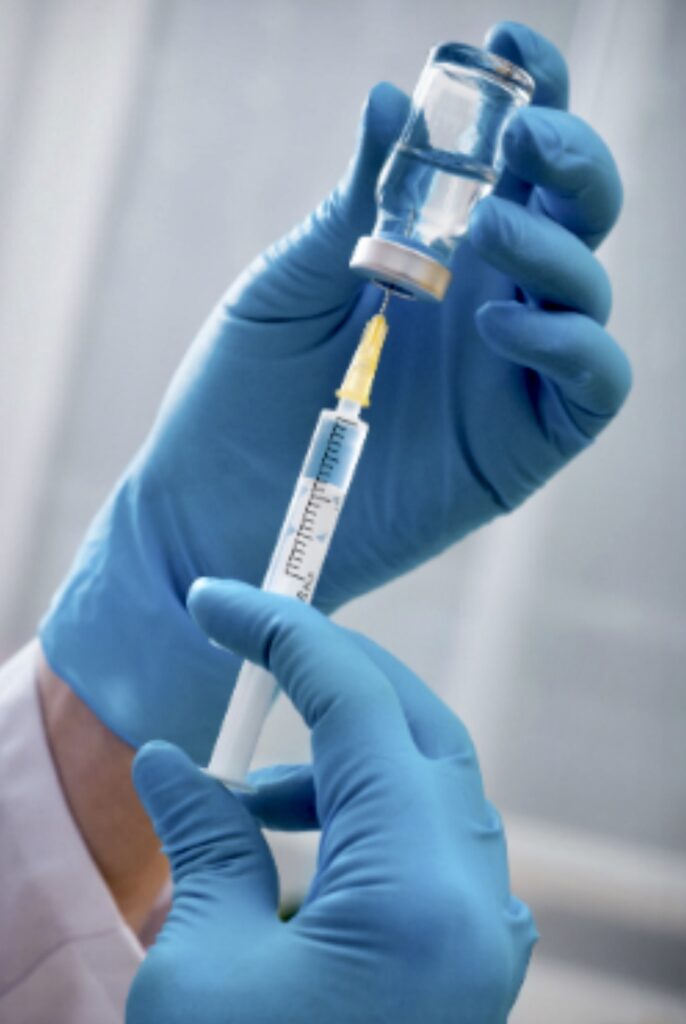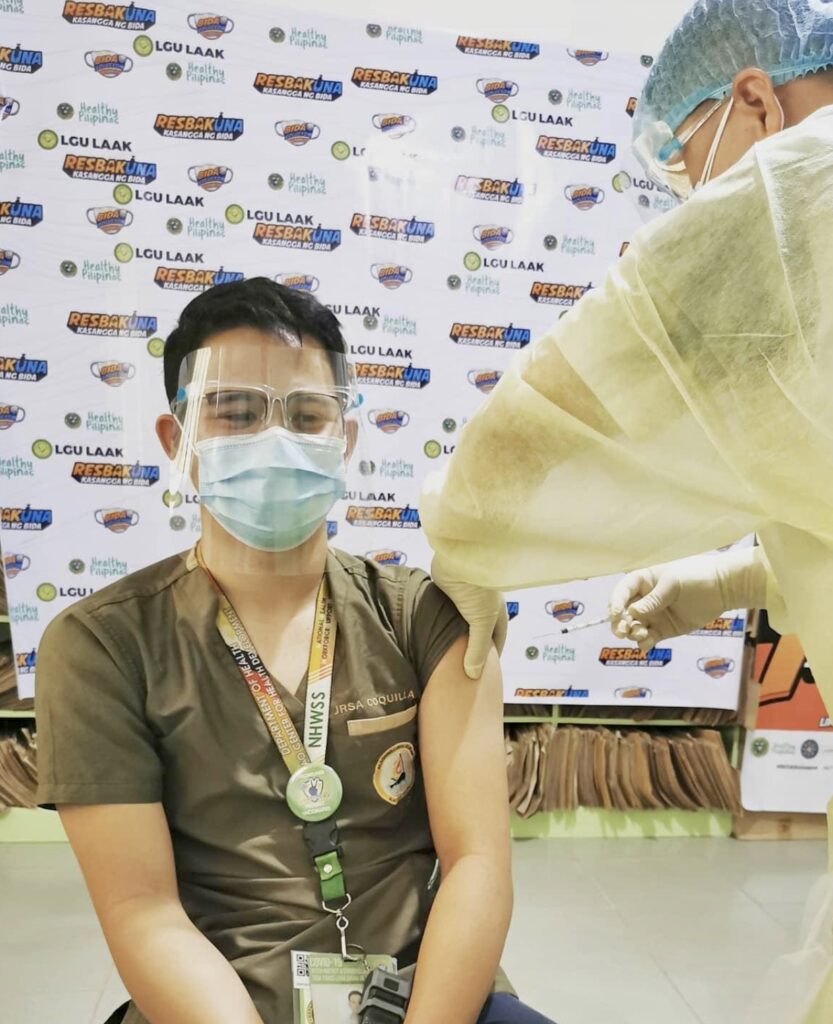WHY VACCINES ARE NECESSARY
By Henrylito D. Tacio
Photo credits: thechildren.com and Dr. Shane Coquilla
On a sunny Monday morning, 12-year-old John arrived early at school in Bansalan, Davao del Sur. When he opened his classroom door, a stray dog that had wandered into the building the day before jumped up, bit his right arm and ran off.
None of the teachers had arrived yet, so John, his arm bleeding, ran home. His mother took him to a nearby health center, where a nurse cleaned and sutured the wound. Life returned to normal until a month later, when John suddenly refused to eat or drink.
A few days later, he woke up screaming – his legs were paralyzed and he couldn’t get out of bed. John’s parents rushed him to hospital. After examining him, doctors said there was nothing they could do for him. He died the next day, a victim of rabies.
Each year, 200 to 250 deaths are reported due to bites of rabid animals, particularly dogs. At least 50% of the victims are children aged 5 to 14 years, according to the Department of Health.
Once symptoms of rabies are apparent, there’s nothing that can be done. That’s why rabies is touted to be the deadliest disease ever known to man. But people bitten by rabies-carrying animals – like dogs and cats – can still be saved if they are to be vaccinated before the virus incubates.
“Rabies vaccine is an active immunizing agent used to prevent infection caused by the rabies virus,” explains the Mayo Clinic. “The vaccine works by causing your body to produce its own protection (antibodies) against the rabies virus.”
Rabies vaccine is used in two ways. It may be given to persons who have been exposed (that is, by a bite, scratch, or lick) to an animal that is known, or thought, to have rabies. It may also be given ahead of time to persons (like veterinarians, animal handlers, or travelers) who have a high risk of getting infected with rabies virus.

“Vaccines are one of our most important tools for preventing outbreaks and keeping the world safe,” Dr. Tedros Adhanom Ghebreyesus, director-general of the World Health Organization (WHO), said in a press statement.
The way vaccines work is an amazing process. When a person gets a vaccine, his immune system responds by recognizing the invading virus or bacteria. For another, the immune system produces antibodies (proteins produced naturally by the immune system to fight disease).
More importantly, the immune system remembers the disease and how to fight it. “Our immune systems are designed to remember,” the United Nations health agency explains. “Once exposed to one or more doses of a vaccine, we typically remain protected against a disease for years, decades or even a lifetime. That is what makes vaccines so effective. Rather than treating a disease after it occurs, vaccines prevent us in the first instance from getting sick.”
When a person gets vaccinated against a disease, their risk of infection is also reduced – so they’re less likely to transmit the virus or bacteria to others. As more people in a community get vaccinated, fewer people remain vulnerable, and there is less possibility for an infected person to pass the pathogen on to another person. This is what herd immunity is all about.
“Herd immunity does not mean unvaccinated or individuals who have not previously been infected are themselves immune,” WHO clarifies. “Instead, herd immunity exists when individuals who are not immune, but live in a community with a high proportion of immunity, have a reduced risk of disease as compared to non-immune individuals living in a community with a small proportion of immunity.”
Vaccines protect against many different diseases, including: cervical cancer, cholera, coronavirus disease 2019 (COVID-19), diphtheria, hepatitis B, influenza, Japanese encephalitis, measles, meningitis, mumps, pertussis, pneumonia, polio, rabies, rotavirus, rubella, tetanus, typhoid, varicella, and yellow fever.
But like all medicines, side effects can occur after getting a vaccine. “However, these (side effects) are usually very minor and of short duration, such as a sore arm or a mild fever,” the WHO said. “More serious side effects are possible, but extremely rare.”
A person is far more likely to be seriously harmed by a disease than by a vaccine. For example, tetanus can cause extreme pain, muscle spasms (lockjaw) and blood clots, measles can cause encephalitis (an infection of the brain) and blindness. Many vaccine-preventable diseases can even result in death. The benefits of vaccination greatly outweigh the risks, and many more illnesses and deaths would occur without vaccines.
But not all people can be vaccinated. There are some people, because of medical conditions, should not get certain vaccines. These conditions can include: chronic illnesses or treatments (like chemotherapy) that affect the immune system; severe and life-threatening allergies to vaccine ingredients (which are very rare); and severe illness and a high fever on the day of vaccination.
According to WHO, all the ingredients of a vaccine play an important role in ensuring a vaccine is safe and effective. Some of these include: antigen (a killed or weakened form of a virus or bacteria, which trains the bodies to recognize and fight the disease that can be encountered later on), adjuvants (help to boost the immune response), preservatives (ensures a vaccine stays effective), and stabilizers (protect the vaccine during storage and transportation).
Vaccines are different from drugs. “A vaccine stimulates your immune system to produce antibodies, exactly like it would if you were exposed to the disease,” explains the US Centers for Disease Control and Prevention (CDC). “After getting vaccinated, you develop immunity to that disease, without having to get the disease first.”
That’s what makes vaccines such powerful medicine. Unlike most medicines, which treat or cure diseases, vaccines prevent them. And this is the reason why children, particularly newly-born babies, are advised to be vaccinated.
“Immunity is the body’s way of preventing disease,” the Atlanta-based CDC says. “When a baby is born, his immune system is not fully developed, which can put him at greater risk for infections. Vaccine reduces a child’s risk of infection by working with his body’s natural defenses to help safely develop immunity to disease.”

Most vaccines are given by an injection, but some are given orally (by mouth) or sprayed into the nose. Aside from those mentioned earlier, vaccines protect against many different diseases, including: cervical cancer, cholera, hepatitis B, influenza, Japanese encephalitis, measles, mumps, pneumonia, rabies, rotavirus, rubella, typhoid, varicella, and yellow fever.
Vaccines protect people throughout life and at different ages, from birth to childhood, as teenagers and into old age. “If we delay vaccination, we are at risk of getting seriously sick,” the WHO warned. “If we wait until we think we may be exposed to a serious illness – like during a disease outbreak – there may not be enough time for the vaccine to work and to receive all the recommended doses.”
Once a person is vaccinated, he can still get sick. “No vaccine is 100% effective,” Dr. Kathryn M. Edwards, a spokesperson for the Infectious Diseases Society of America, was quoted as saying by Reader’s Digest. In a major outbreak, immunized people can become infected, though not the same rate as people who have not been immunized, the WHO states.
In most instances, once is not enough when it comes to vaccine. Booster is how experts call this. “When people get a second shot of a vaccine, the protection may reach nearly 100% effectiveness,” the US Centers for Disease Control and Prevention (CDC) claims.
Reader’s Digest’s Kristine Solomon wrote: “In adults, for instance, the Td (tetanus, diphtheria) vaccine requires a booster every 10 years. Other adult vaccines that require extra doses are hepatitis A (two doses given six to 18 months apart), hepatitis B (three doses over six months), and human papillomavirus (also three doses over six months).”
Not everyone could be vaccinated though. Among those that cannot be immunized are the very young babies, those who are seriously ill or have certain allergies. “They depend on others being vaccinated to ensure they are also safe from vaccine-preventable diseases,” the WHO said.
There are also groups of people who should avoid live vaccines. “If it’s a live vaccine and you’re immunocompromised, you should not get the vaccine,” advised Dr. Richard Kuhn, a distinguished American medical professor in science at Purdue University. “Most live viruses are not advocated for women who are pregnant.”
Among those considered as live vaccines are measles/mumps/rubella (MMR), smallpox and chicken pox. “Fortunately, most vaccine reactions are mild, such as redness around the injection site,” Solomon wrote. “Only rarely do you see serious reactions.”
As with all medicines, every vaccine undergoes several studies and testing before it is released to the public. “To develop a vaccine, there first has to be research done to understand the nature of the infection you’re trying to prevent,” Prof. Adam Finn, the David Baum professor of paediatrics at the University of Bristol in the United Kingdom, explained to Gary Finnegan’s Vaccine Today. “You need to know enough about the virus or bacterium that causes the infection; you have to understand the structure of the bug because in order to create a vaccine you need to know enough about the infection to be able to mimic it. A vaccine is essentially a mimicked infection.”
Before a vaccine is released for human use, careful steps are taken to ensure that all material is manufactured in an entirely safe and strictly controlled way. “Following pre-clinical research, the vaccine is tested in a very small group of people – sometimes as few as half a dozen – in what is called a Phase I clinical study,” Finnegan wrote. “This helps to rule out major safety problems and also helps doctors to work out the right dose for the next step in the testing process.
“Phase II trials involve giving the vaccine to a larger number of people (often 100 to 200 but sometimes in the 1,000s). At this point, researchers want to see whether the vaccine gives a consistent immune response and they watch for any side effects that might occur.
“Where a disease is reasonably common, Phase III trials can be conducted to test how the vaccine protects against natural infection. These studies often include tens of thousands of healthy volunteers so that doctors have a better chance of discovering rare problems which did not show up in smaller Phase II studies and prove that the vaccine prevents the disease.”
In the current fight against the COVID-19 pandemic, scientists have developed at least 10 vaccines. These are: Sinopharm, Sinovac, Kexing, and Can Sino (all four from China), AstraZeneca (United Kingdom), Pfizer (United States and Germany), Moderna, Johnson & Johnson, and Novavax (all three from the United States), and Sputnik V (Russia).
“Vaccines are a critical new tool in the battle against COVID-19 and it is hugely encouraging to see so many vaccines proving successful and going into development,” the WHO said. “Working as quickly as they can, scientists from across the world are collaborating and innovating to bring us tests, treatments, and vaccines that will collectively save lives and end this pandemic.”

